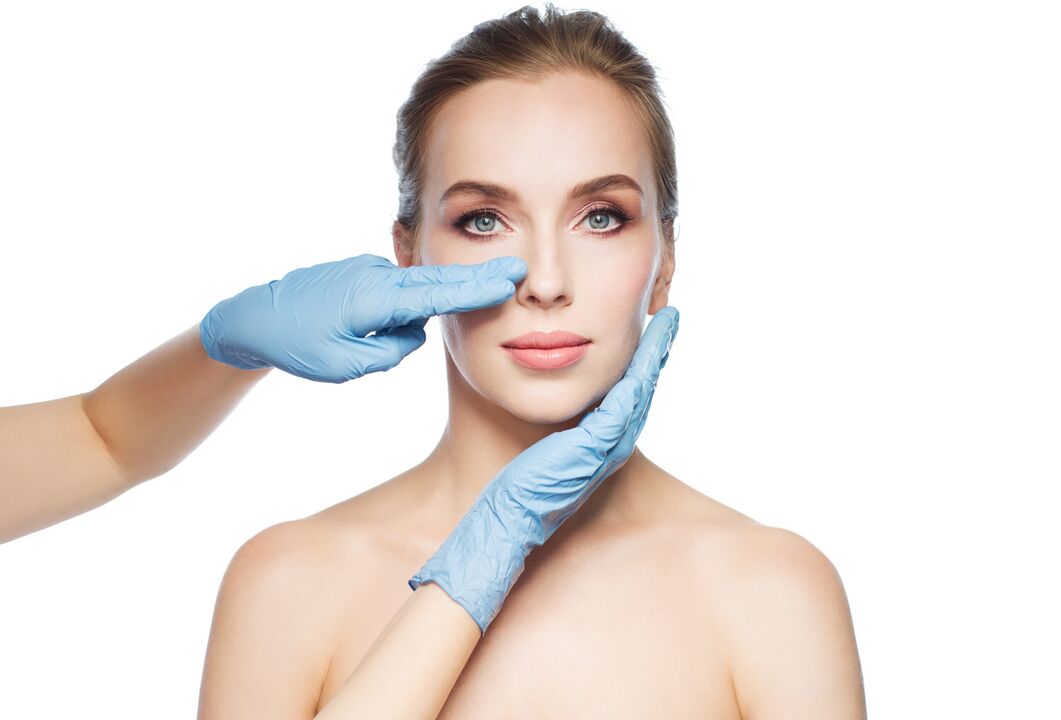When preparing for plastic surgery, patients ask themselves a question: Which is better, open or closed rhinoplasty? In fact, there is no definite answer to this question. Of course, there is a fundamental difference between the two methods, but they require the same amount. The choice of surgical approach for a particular patient is determined individually and depends on many factors, such as:
- The nature of nasal defects. If extensive intervention is planned, or if the correction requires the installation of implants, sawing the nasal bone, it is best to use an open rhinoplasty, which involves greater visualization of the surgical field and visibility elements of even small structures.
- Surgeon qualification. Closed access is not for every specialist. The surgeon needs to have extensive experience in performing rhinoplasty, as well as impeccable knowledge of the internal anatomy.
- Features of previous operations. Reoperations are often performed using an open rhinoplasty technique, as it is important for the doctor to understand all the nuances of previous interventions.

During the consultation in the clinic, the specialist will consider your wishes for the procedure, however, the final decision on whether to perform an open or closed rhinoplasty is made by the doctor based on the individual characteristics and indications of the patient.
Indications and contraindications for open rhinoplasty
Indications for open rhinoplasty
The indications for open rhinoplasty are the same as for any rhinoplasty:
- High, wide and flat dorsum of the nose;
- asymmetrical;
- drops and irregularities;
- The tip of the nose is rounded, sunken, or too high.
Contraindications for open rhinoplasty
- up to 18 years old (the tissue formation process is not over yet);
- Inflammatory ENT diseases;
- Herpes in the active phase;
- decompensated diabetes;
- coagulation disorders;
- menstruation.
Open Rhinoplasty Procedure
Open rhinoplasty is performed under general anesthesia. Previously, patients had to pass tests prescribed by their surgeons.
Open rhinoplasty provides complete visualization of the procedure: the surgeon has the opportunity to examine all the structures of the nose in detail. During the correction, the surgeon makes an incision at the base of the columella (the area of skin between the nostrils). Next, make a small marginal incision from the columella to the inside of each nostril.
In open rhinoplasty, the surgeon uses special surgical scissors to carefully cut the skin in the columellar area, separating it from the cartilaginous frame of the nose. Doctors now have the opportunity to examine all anatomical components in detail, assess the structural state of cartilage and skeletal parts and give them the necessary shape. In open rhinoplasty, doctors can remove and move parts of cartilage, bone, install special nasal implants, and more.
At the end of an open rhinoplasty, the surgeon applies a thin suture material to the incision area: the fine work of the incision allows you to get an imperceptible scar. Turundas are installed in the nasal passages (they are removed the next day) with an anhydrite bandage (the doctor removes them for 10-11 days).
Therefore, the only and temporarily visible part of the incision in open rhinoplasty is the columellar region. The incision brightens and becomes invisible after a few months.
Rehabilitation after open rhinoplasty
You will be in the clinic's hospital for the first 1-2 days after open rhinoplasty.
You can evaluate the primary outcome of an open rhinoplasty after removing the plaster cast, but the nose will still look swollen. 1. 5 months after surgery, the picture will be clearer. After an open rhinoplasty for at least two months, you must give up exercise. Contact sports (boxing, wrestling) must not be started earlier than 6 months: The nose after open rhinoplasty requires careful treatment and complete exclusion of even the smallest injuries.
For two months after an open rhinoplasty, you should forget about saunas, steam baths, and wearing glasses.




















